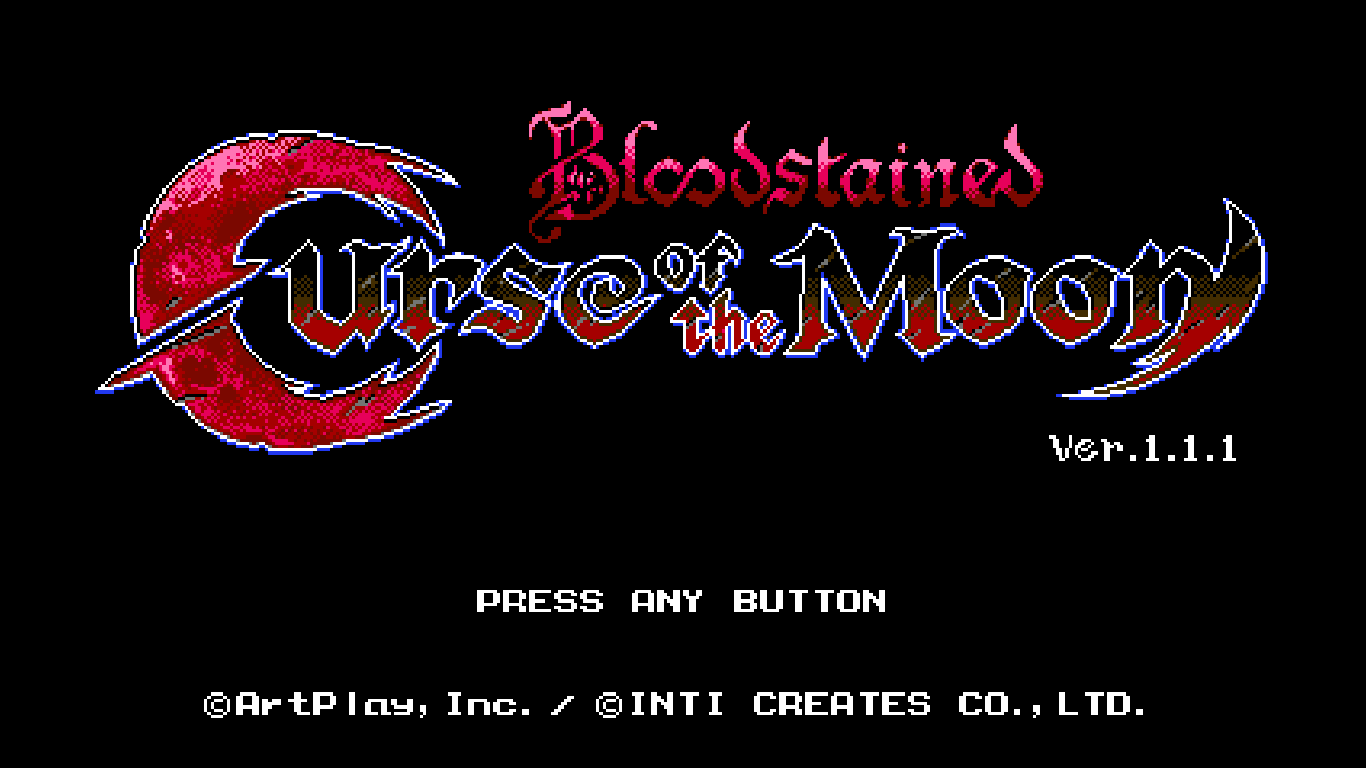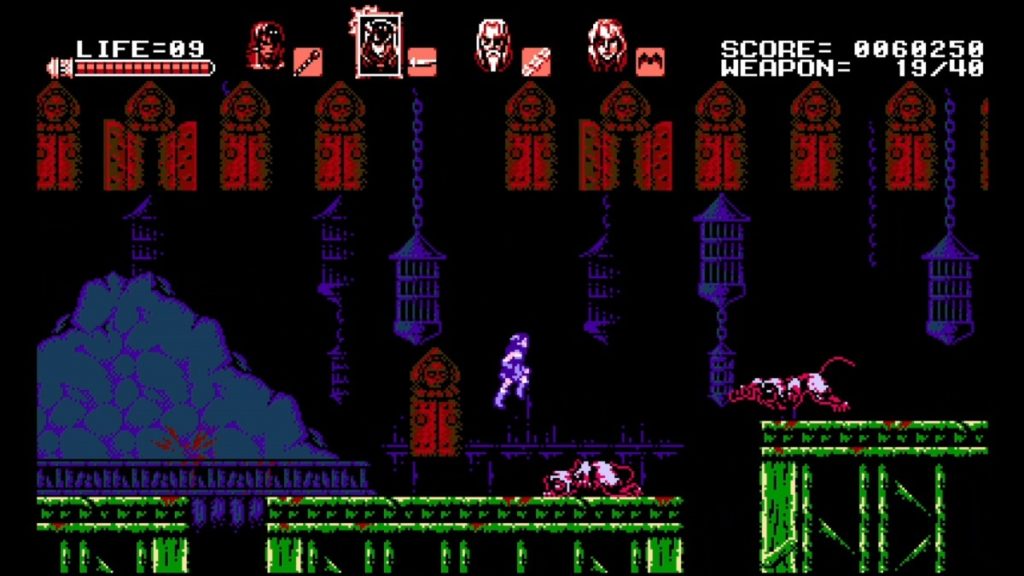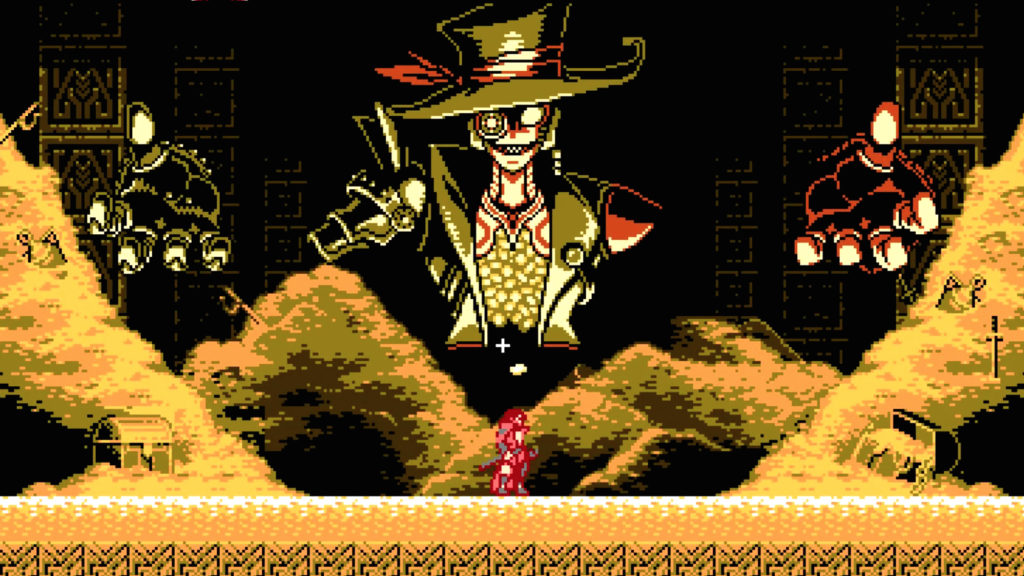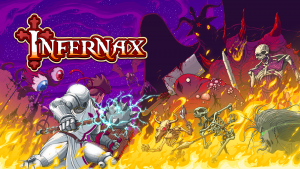
Bloodstained: Ritual of the Night was a Kickstarter phenomenon, promising the type of side-scrolling Metroidvania experience that gamers expect from Symphony of the Night director Koji Igarashi. As somewhat of an afterthought, one of the incentives for backers was a smaller spin-off game inspired by the earlier, more linear Castlevania entries. Described as a “mini-NES” game, Bloodstained: Curse of the Moon stands on its own as a well-designed, albeit slight retro throwback.
The game does feel similar to those early Castlevania titles, in that it’s a 2-D action platformer with stages punctuated by boss fights. The controls are simple- there is a jump button, an attack button, and a button for magic items. Attacking random walls can yield health-restoring items, the enemies in your path are various hellish monstrosities and the protagonist has a distaste for a particular brand of otherworldly creature (in this case it’s demons instead of vampires, but close enough). Curse of the Moon most heavily borrows from Castlevania III’s addition of multiple protagonists, and this mechanic is the glue that holds this homage together.

Defeating each of the first three bosses rewards you with a new demon hunter, each with unique properties that make them useful in specific scenarios. To complement the starting character’s short range sword play, there is a whip user whose attacks have a great deal of range, but are slightly slower. There is also a sorcerer, whose magic items can annihilate enemies, and a shape-shifter who can transform into a bat. They can be switched between at any time, and since each has attacks that are more useful on certain enemies than others, frequently swapping protagonists becomes a necessity. Shortcuts are built around the specific movement abilities of each character, which makes getting through areas significantly easier if you have the right personnel. Considering that the death of a character will send you back to a checkpoint while also robbing you of their unique abilities, managing the individual health bars of each hunter is, and feels, extremely consequential.
Like most NES games, you are granted a finite number of lives to complete a level, and if you run out you’re sent back to the beginning. Whilst this may seem harsh, the levels are short and well-designed enough that this usually isn’t much of a problem. In the earlier stages the difficulty feels fine tuned, tension coming from the knowledge that each tick of health bar lost is one step closer to a level restart. While this balance is somewhat lost in the later levels, due to persistent health upgrades and having access to the full cast, these areas still offer up enough interesting monster designs to remain engaging. Enemies all have clear patterns that feel fair when memorised, and the additional tactical layer of switching between demon hunters to find a particularly good match-up is that extra bit of zest that distinguishes Curse of the Moon from the droves of retro-inspired platformers. Similarly the boss fights carry the intimidating visage of old school difficulty; their attacks are telegraphed but require tight timing, and finding out the best character to deal with each portion of each boss is essential.

While the vast majority of the levels feel polished and well designed, there are occasional platforming segments that feel disproportionately punishing. Like most NES games, once you’ve committed to a jump you lack any form of air control. When this is combined with flying enemies that spawn somewhat randomly, the result is frantic leaps of faith that feel somewhat arbitrary in their outcome. In the later levels it can often feel finicky to get to the end of a platforming sequence, a jittery bat creature putting your character into hit stun as you fall to your death. This is particularly frustrating because the death of a character means that there are less options for shortcuts and enemy encounters. Still, the occasional irritating platforming section only make up a small percentage of the overall game, with most areas offering a satisfying challenge.
In short, Curse of the Moon plays exactly how many people will remember games from a certain era, albeit with a slightly tighter and more fairly designed experience than many other NES games or modern throwbacks. The pixel-art work is great, the limited colour palate combining with the chip tune soundtrack to create an aesthetic reference to games of the 80s. While even its core conceit of switching between demon hunters can be traced back to previous Castlevania entries, this mechanic combined with generally good monster and stage design makes for a fun retro inspired experience. Factors like its occasionally frustrating platforming and it’s short length hold it back from fully surpassing the games of the era that inspired it, but Curse of the Moon is an easy recommendation for those looking for an action platformer with old-school sensibilities.
Bloodstained: Curse of the Moon is available now for PlayStation 4, Xbox One, PC, Nintendo Switch and PS Vita.
Rating: 8.4







